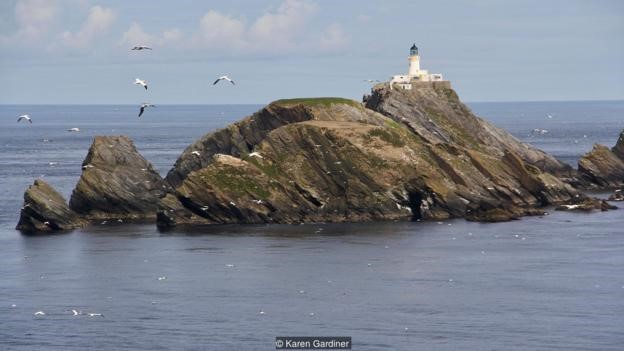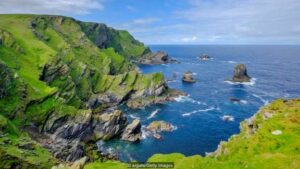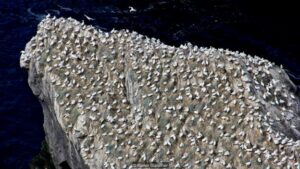
 travel
travel 
Shetland, the most northerly inhabited island in the UK, comes into sight from the northern tip of Unst, a dramatic view. The tiny island of Muckle Flugga, surrounded by gannets, rises straight out of the North Sea. Perched on top of its tight rocks, pointing up like a single candle in An anniversary cake and the end of the UK as an exclamation mark, It’s the most northerly lighthouse in Scotland. It wears the colors that mark it as a Stevenson lighthouse – creamy-white with a pale yellow band.
This opinion would have been known to the Scottish poet Robert Louis Stevenson. He accompanied his father, pioneering lighthouse engineer Thomas Stevenson, as a young man in 1869 To examine the lighthouse on a visit to Unst and Muckle Flugga, which Thomas and his brother David had begun to construct in 1854. The brothers each designed over 30 towers around the coasts of Scotland; it was expected that Robert Louis would follow his family into lighthouse engineering, and this trip was part of his preliminary training.
“They sailed around the lights of the east coast,” writes Bella Bathurst in The Lighthouse Stevensons, her three-generation biography Of the Stevenson family, all of whom constructed beacons, “up to Scapa Flow and then to Muckle Flugga,” she added, “But [ Robert ] Louis seemed much more interested in the landscape than in the scenery. in the lights.”
Robert Louis never became a lighthouse engineer, but legend has it that his visit to the area inspired his 1883 published classic adventure tale, Treasure Island.
Few records remain of Stevenson’s visit, in addition to his brief entry in the North Unst Lighthouse visitor’s book (as it was then known), which reads: “R L Stevenson, Edinburgh, June 19, 1869.” But the connection is a plausible story: look at the imaginary Treasure Island map – described as “a fat dragon standing up” in the book – and you couldn’t ignore his similarity to Unst’s, Stevenson’s profile would have been seen on maps used by lighthouse engineers when sailing around Unst’s coast to Muckle Flugga’s rocks.
Until I came to Unst, I had read about the Treasure Island Club and sitting there at what seemed like the raw edge of the world, and it was easy to understand how Unst could stimulate the imagination. It is a place in the farthest corner of the United Kingdom, closer to Tórshavn, Oslo, and the Arctic Circle than London. Unst’s connection with the book wasn’t why I came –I was attracted to far northern islands for a long time–but I was curious enough to pick up a copy of Treasure Island before I left. Re-reading the book, I wondered if it was where I discovered my love of the remote edges of the world when I first read it as a young girl.

Early on, waiting to start his voyage to Treasure Island, Stevenson’s narrator speaks of “brooding” over the map he had found in the chest of an old sea captain, “full of sea dreams and the most charming hopes of exotic islands and adventures.” These are words that might encourage even a devoted landlubber to set sail for far-flung shores.
My trip to Unst has been quick. I boarded a bus in the Shetlandic capital of Lerwick, where I had arrived two and a half hours later after an overnight ferry from Aberdeen and was driven to my destination. Shetland may be sparsely populated, but the bus network is extensive. Connects with its boats efficiently. I set off on foot for Hermaness National Nature Reserve Since dropping my bag at an old Royal Air Force station’s youth hostel. Scottish Natural Heritage, the reserve’s public body, describes Hermaness in summer as “the seabird world’s New York: a noisy, busy and often smelly metropolis home to over 100,000 breeding seabirds.”

Past the visitors center inside the old Muckle Flugga Lighthouse Shore Station – where lighthouse keepers slept when not in duty – I walked through steep, grassy and boggy terrain, along a path marked so as not to disturb the great nesting skuas, the aggressive seabirds known in Shetland as “bonxies.” I hit the edges of the mountain about an hour later, turned south, and smelled the guano until I reached the high gannetry on the cliffs, under the woolly sheep clinging absurdly to the vulnerable tops. Hundreds of gannets, known as “solans” in Shetland, inhabited each surface of the cliffs, while others glided above them, coming to land from a day of fishing, searching for a vacant rock area. Puffins (or “Tammie worries”) were wiggling in and out of their burrows on top of the cliffs. It was a place full of life, chaos, smell, sound, and sight.
I turned north along the cliffs, down the grassy slopes of the emerald-green. Offshore rocks and sea arch held further gannets. Their racket was struggling with the wind-whipped sea din. A bend rounded, a small chain of skerries came into view, like stones skimming across the water: Vesta Skerry, Rumblings, Tipta Skerry, Muckle Flugga and eventually Out Deck, marking the very end of the UK officially.
To my joy in being there, the beautiful names added a feeling that seemed to be shared by the other few guests that I encountered. “It’s amazing!” A woman sang with happiness, almost giddy, as I pushed her back down the cliffs. Another who had leaned to the cliffs on her walker told me she just wanted to sit there waiting for the sun to set – never mind that the Shetlandic High Summer is the time of “simmer dim,” as it is known locally when the sun only dips briefly under the horizon.